Source
Introduction
The Source module in Builderius is a versatile element that allows you to specify media resources for different types of media elements, such as images, audio, and video. By using the <source> HTML tag, the Source module provides a convenient way to define alternative media resources for different formats of resolutions. This ensures that the appropriate media content is delivered to users based on their device capabilities, network conditions, or other criteria.
The Source module serves as an essential component in Builderius, enabling you to enhance the media experience on your website or application. It allows you to add multiple <source> tags within a single Source module, each specifying a different media resource. This way, you can accommodate a wide range of devices and conditions while providing seamless media playback.
The Source module is often used in conjunction with media elements like the <video> and <audio> tags to provide browser compatibility and optimal media delivery. By configuring the Source module, you can ensure that your media content is accessible and enjoyable for all users.
Specific Module Settings
In the Data Settings area this module has some specific fields tailored to work with image based content.
URL (src attribute)
Type the URL address of the image file, add from a dynamic source (WordPress database for example) using the Icon at the right side of the field, or use the button in the Image from Media Library section to generate a link to the image.
Image from Media Library
Use the “Media Library” button to find and insert an image from the WordPres library. When an image is inserted it will appear both in the canvas where the module is placed and in the small preview box next to the button. Use the “clear” button to reset the module and start over.
Video/Audio
This toggle allows the Source to be used either to handle image based content and audio or video. Toggle to use with appropriate media.
Standard Module Settings
The Source module shares standard settings with other Builderius modules, making it easy to adapt and use across your designs. Once you learn how to use Source you know how to use other modules as well. These settings are divided into two main sections: Data Settings and CSS Settings. Let's explore each in detail.
Data Settings
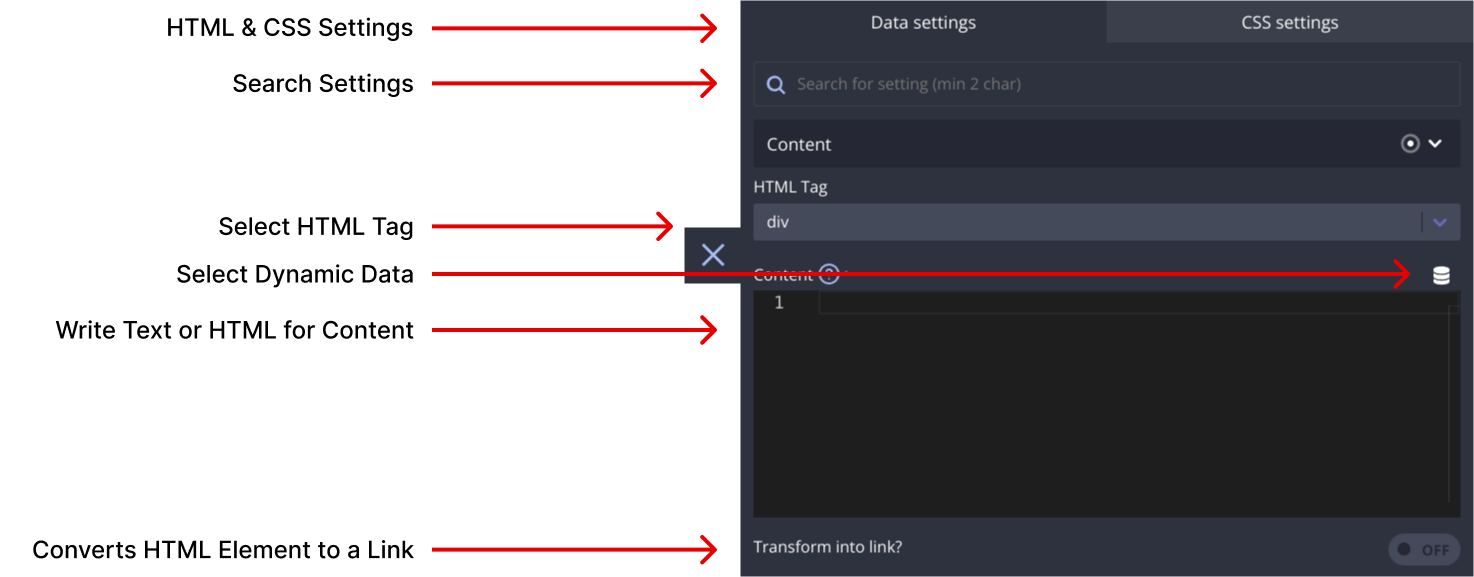
Content
The Content section allows you to define the textual content to be displayed inside the Source module. You can enter simple static text, utilize HTML markup (with autocomplete), and use dynamic data template tags to display information from the WordPress database, JSON, or other data source. Remember, you can nest child modules within this module to create complex content structures.
HTML Tag
The HTML Tag setting empowers you to select an HTML tag from the provided drop-down list or create a custom HTML element by entering any string of letters (follow the syntax rules).
Transform this into a link
This toggle allows you to convert the module into a link element. When enabled, you can manually specify a URL or use dynamic data to generate the link. Please note that activating this option will replace the previously selected HTML tag with the appropriate anchor or link element.
HTML Attributes
In this section, you can add various attributes to the module's HTML code. These attributes enable you to label or modify the behavior of the module. There are three types of attributes you can work with:

Classes
Add multiple classes to apply styles (e.g., color, size, spacing) to multiple modules simultaneously.
ID
Assign a unique ID name to identify this module distinctively. IDs are commonly used for in-page linking or establishing relationships between different modules on the page.
Custom Attributes
Create custom attributes, such as aria- type attributes for screen reader accessibility or data- type attributes to extend module functionality. You can define both the attribute name and its value.
Conditions
The Conditions section allows you to set server-side conditions for displaying the Source module. These conditions are processed before the page is generated, meaning that if the conditions are not met, the module will not appear on the page. Conditions are a powerful way to customize what content appears based on various factors. For more information on conditions, refer to our documentation on conditions.
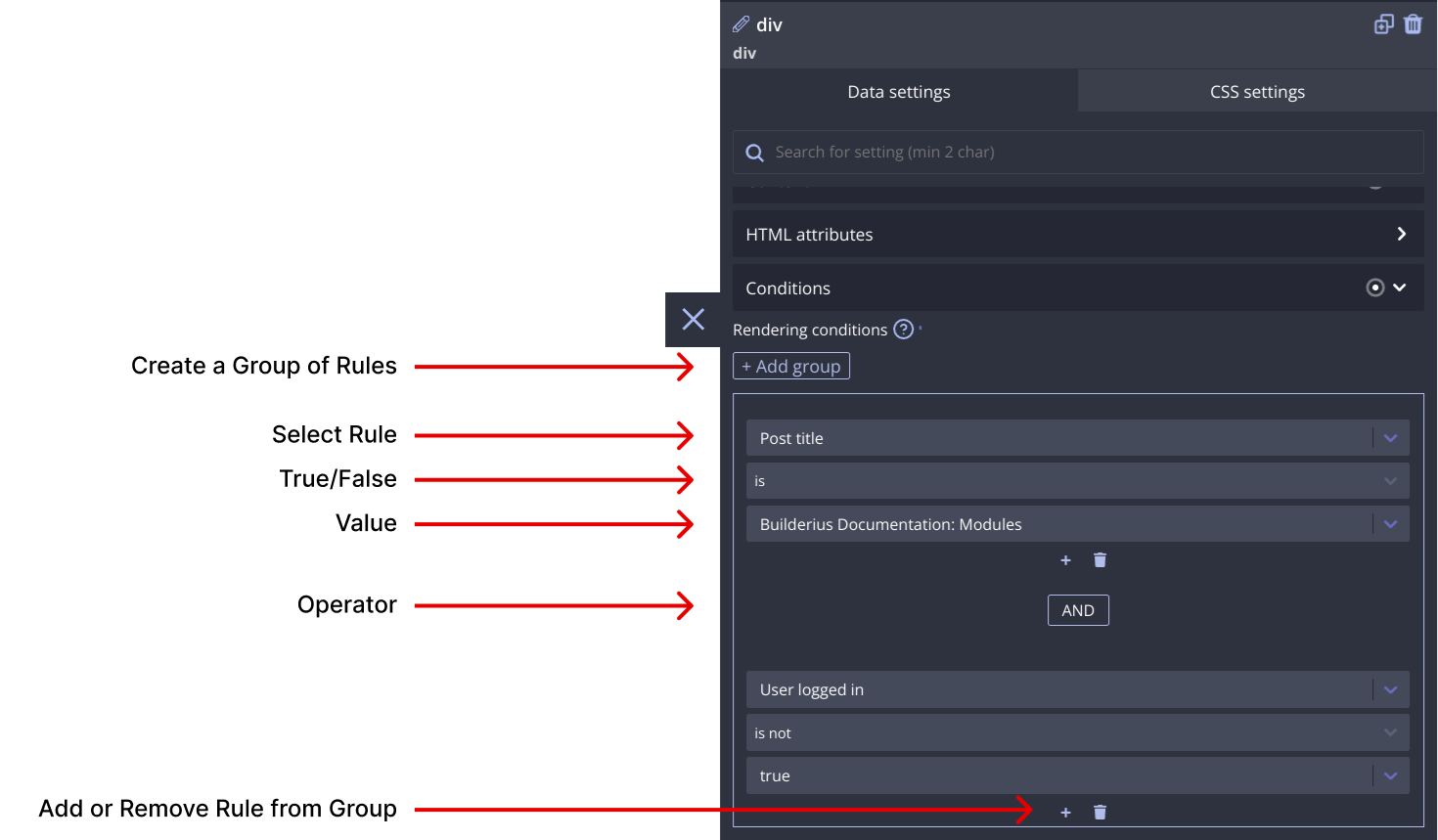
CSS Settings
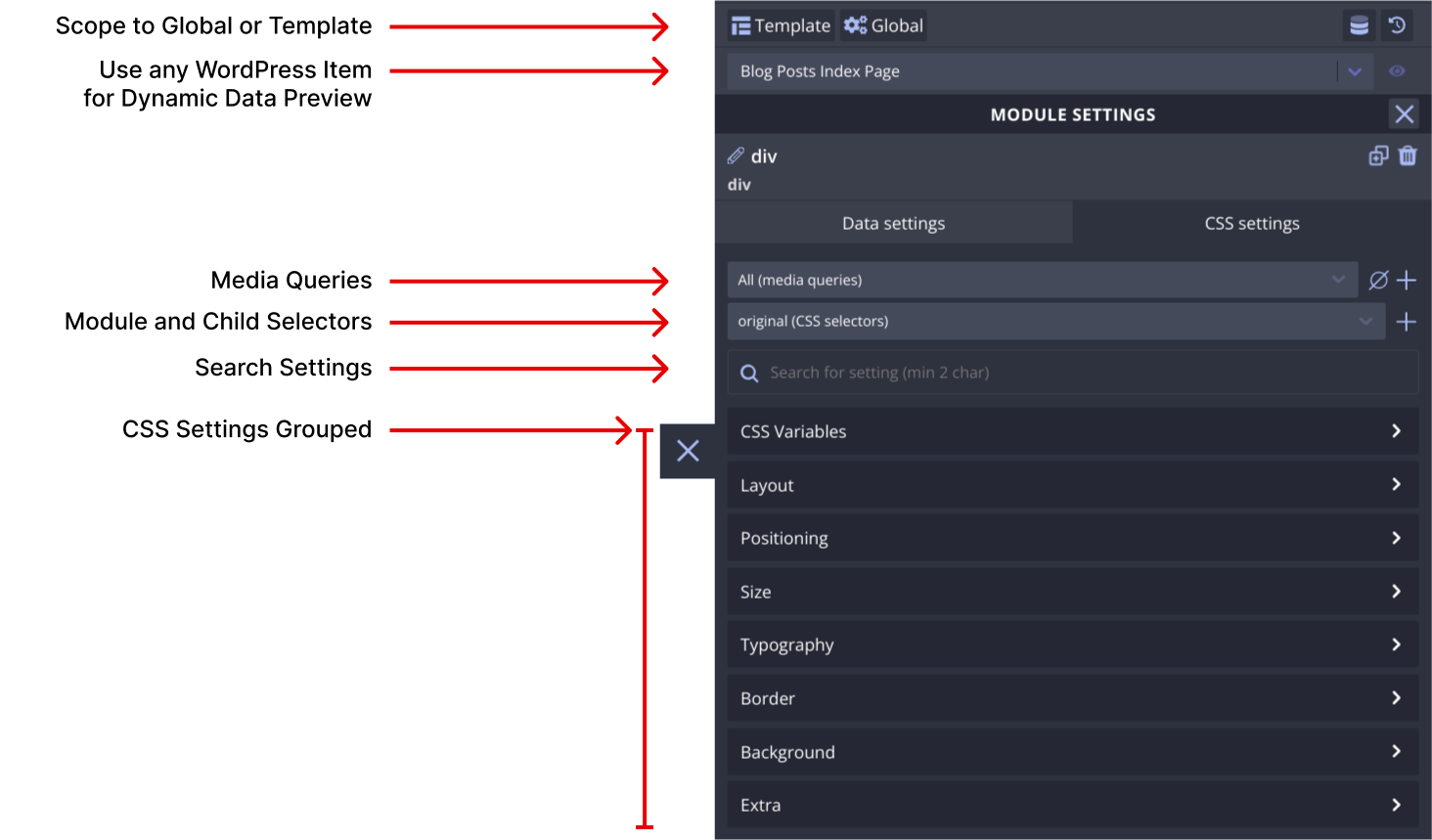
Creating media queries
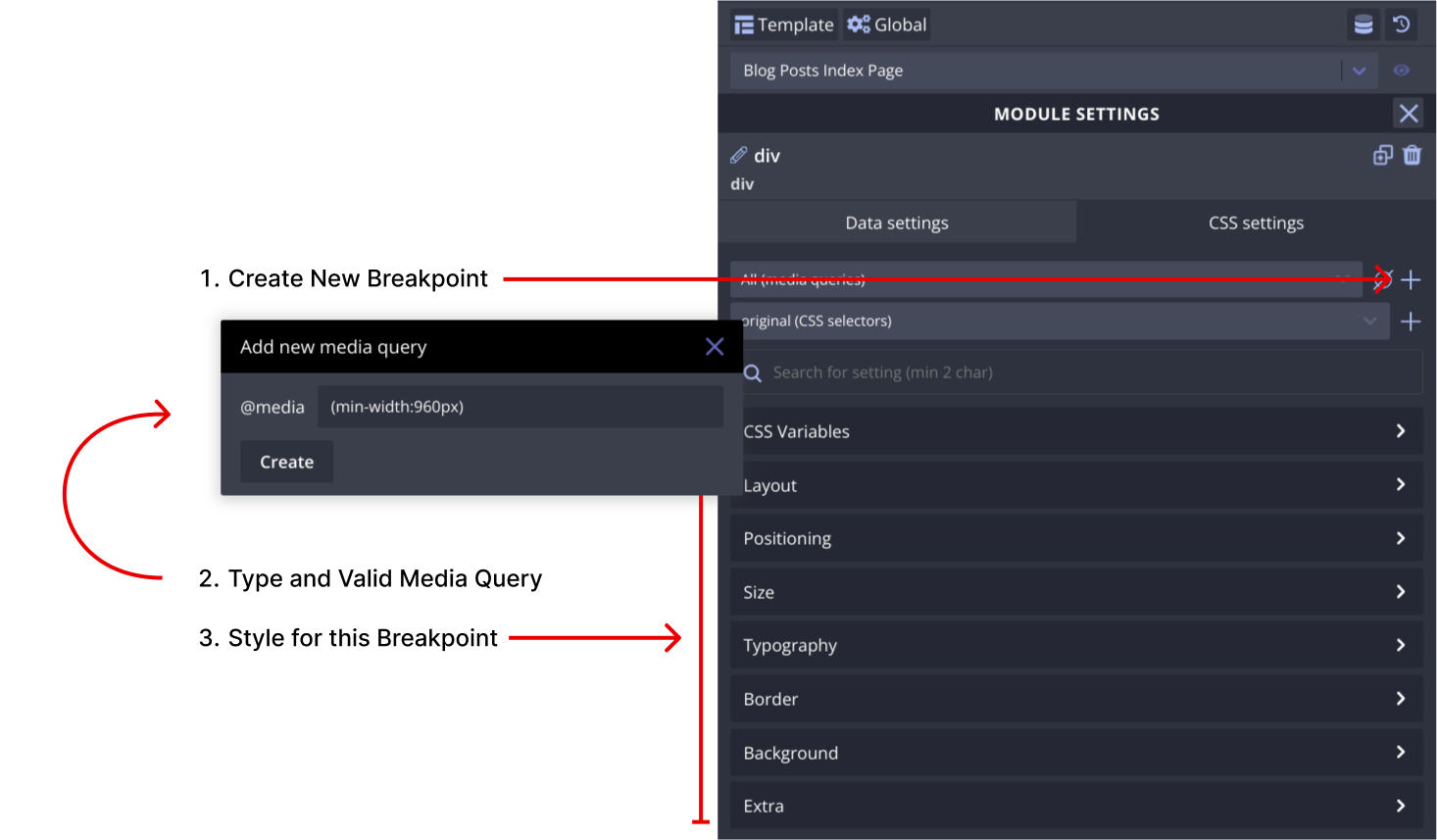
Creating pseudo CSS selectors

Creating custom CSS selectors

The CSS Settings area provides extensive control over the design and styling of the Source module. You can craft the appearance of the module using various CSS methods. The CSS Settings are organized under several subsections:
CSS Variables
Create CSS variables to ensure consistent styles across the Source module and its submodules. Various types of CSS variables are supported, including integer, number, color, image, percentage, length, angle, time, and any value.
Creating CSS Variables
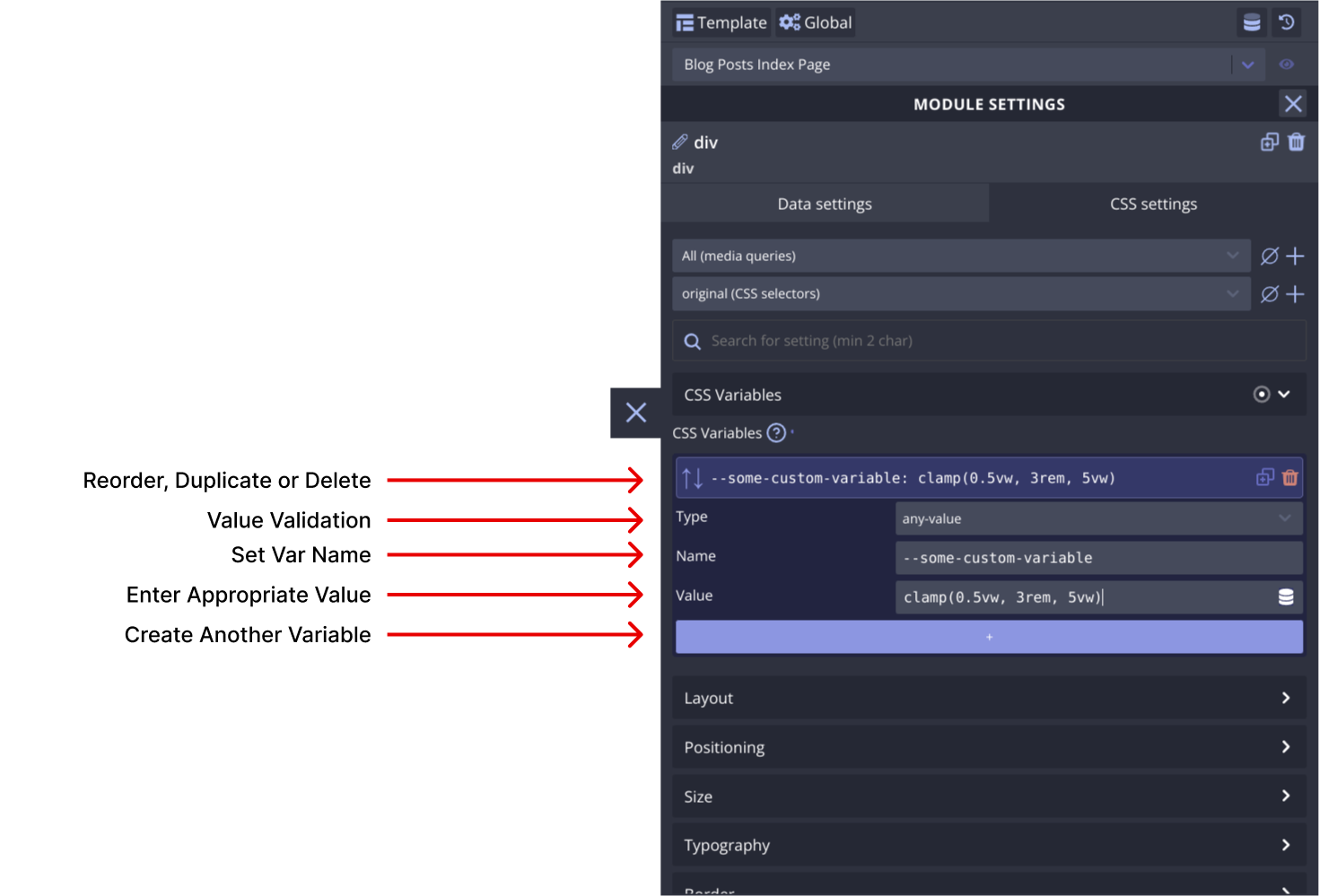
Using CSS Variables
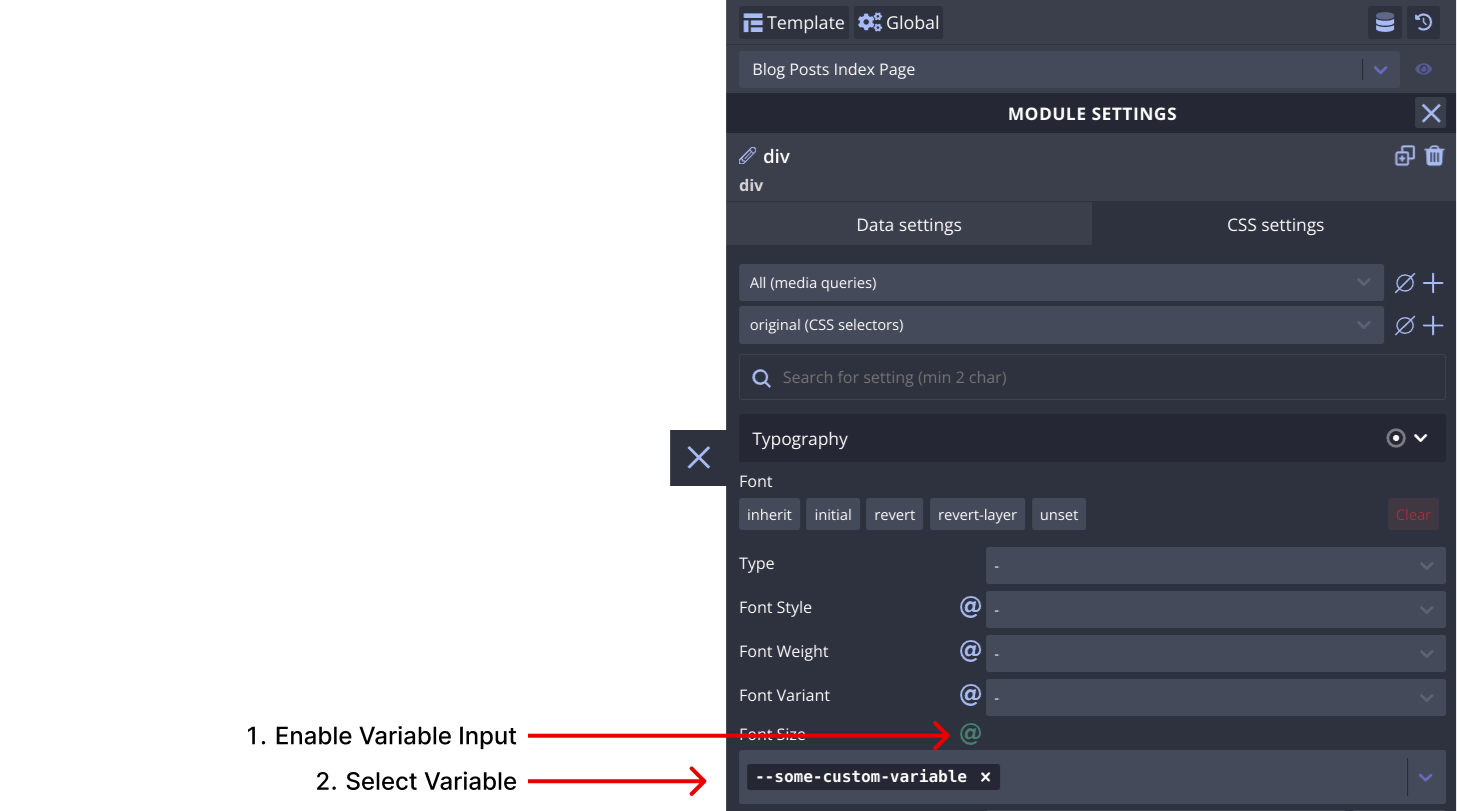
Layout
Control the module's layout using CSS methods such as flexbox and grid, among others.
Positioning
Adjust the positioning of the module using position methods like fixed, absolute, relative, and more.
Size
Manage the size and spacing of the Source module to achieve the desired visual effect.
Typography
Control the presentation of text within the module using typographic CSS properties like font-size, line-height, letter-spacing and more.
Border
Design borders and outlines to enhance the module's appearance.
Background
Apply color, gradients, or images to the module's background as per design needs.
Extra
Additional settings can be found here, offering more customization options.
Examples and Use Cases
To better understand the potential of the Source module, let's explore some practical examples and use cases. These examples will showcase how you can utilize this module to create various elements for your website or application.
Video coming soon
Additional Resources
For more in-depth information the Source module, refer to the following resources:
- HTML
<source>Element (MDN) - How to Section Your HTML (CSS Tricks)
- Semantics in HTML (MDN)
- Using ARIA: Roles, states and properties (MDN)
- A complete guide to data attributes (CSS Tricks)
Conclusion
Congratulations! You've learned about the Source module and its essential settings in Builderius. Armed with this knowledge, you can now create any kind of html element to enhance your website or application. Experiment, explore, and unleash your creativity with the Source module!